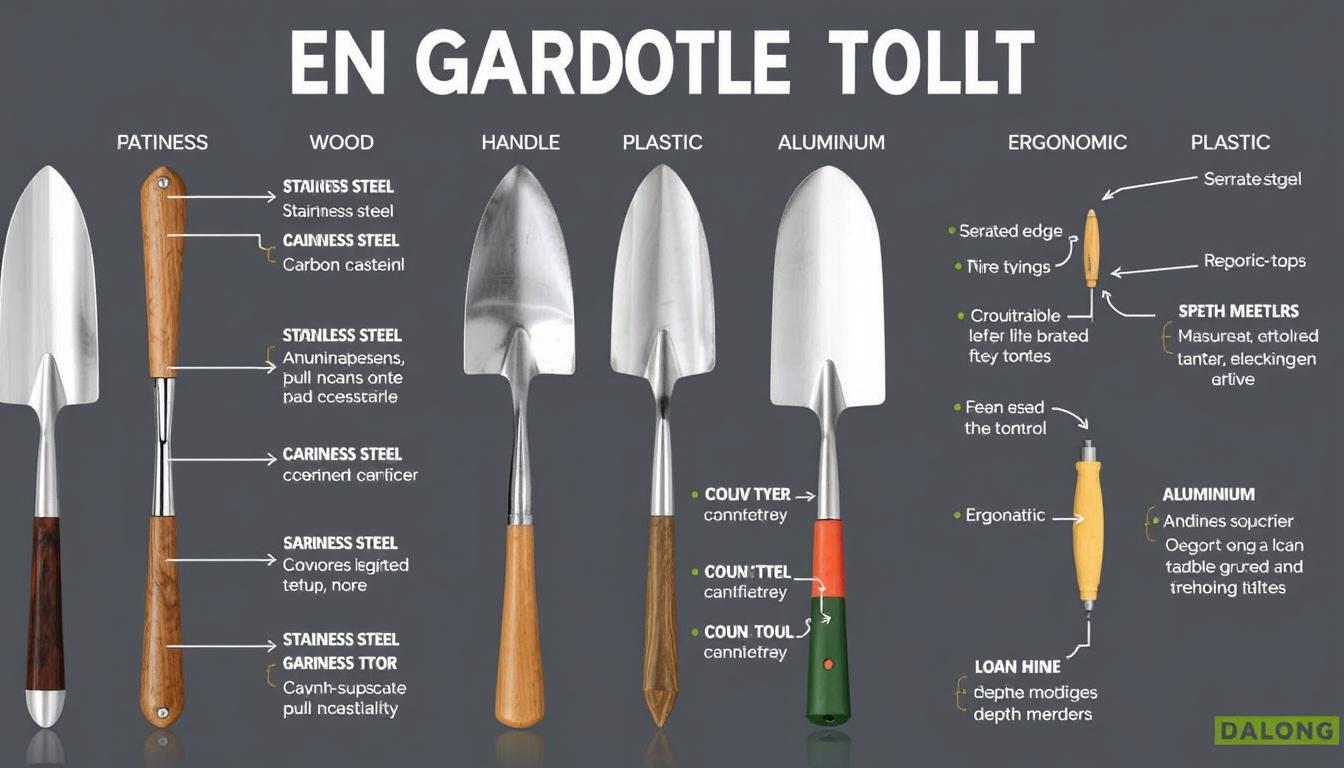Some of the links in this post are affiliate links, which means I may earn a small commission if you make a purchase through those links. This comes at no extra cost to you. Thank you for your support!
Finding the right garden trowel for your specific soil type can make all the difference between gardening frustration and gardening joy. Whether you’re battling clay soil, working with sandy ground, managing loamy beds, or dealing with rocky terrain, the proper trowel can save you time, reduce strain, and make planting more efficient. In this comprehensive guide, we’ll explore how different soil conditions affect trowel selection and recommend the best options for each soil type.
How Soil Type Affects Trowel Selection
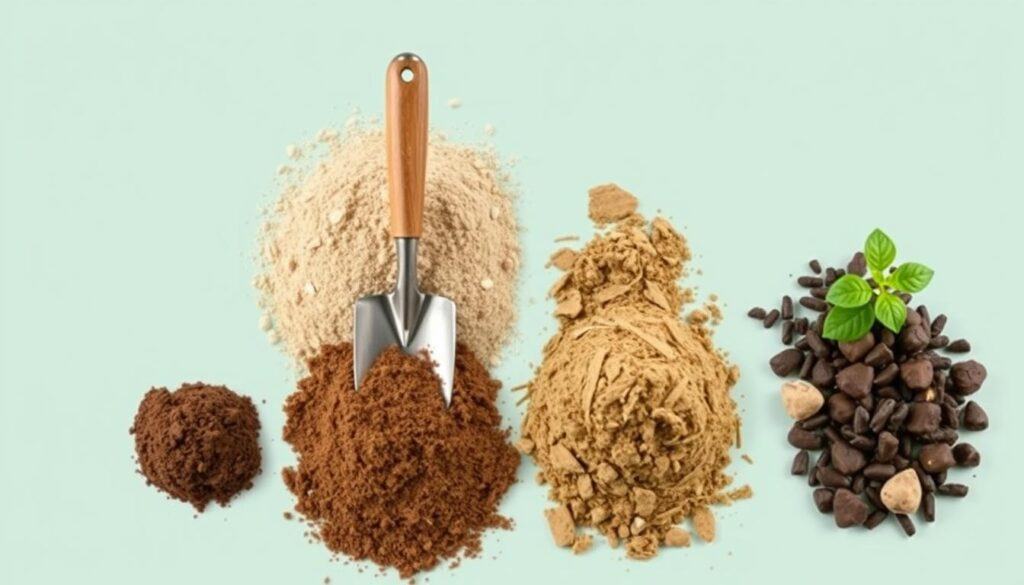
Your garden’s soil composition directly impacts which trowel will work best for your needs. Different soil types present unique challenges that require specific trowel features:
| Clay Soil | Sandy Soil | Loamy Soil |
| Dense and heavy when wet, hard and compact when dry. Clay soil requires a sturdy trowel with a sharp edge to cut through the compacted material and sufficient strength to prevent bending under pressure. | Loose and granular with poor water retention. Sandy soil needs a trowel with a deeper scoop to hold the loose particles and prevent them from falling away during transfer. | Well-balanced mix of sand, silt, and clay. Loamy soil works well with most trowels, but ones with measurement markings are particularly useful for precise planting in this fertile medium. |
| Rocky Soil | Compacted Soil | Mulched Soil |
| Contains stones and pebbles that can damage weaker trowels. Rocky soil demands a trowel with a durable, thick blade that can navigate around obstacles without bending or breaking. | Densely packed from foot traffic or machinery. Compacted soil requires a trowel with a pointed tip and possibly serrated edges to break through the hardened surface. | Covered with organic material. Mulched soil benefits from a trowel with a longer handle to reach through the mulch layer to the soil beneath. |
Best Garden Trowels for Clay Soil
Clay soil presents unique challenges with its dense, sticky nature when wet and brick-like hardness when dry. The best trowels for clay soil feature strong, sharp blades that can cut through compacted material without bending or breaking.
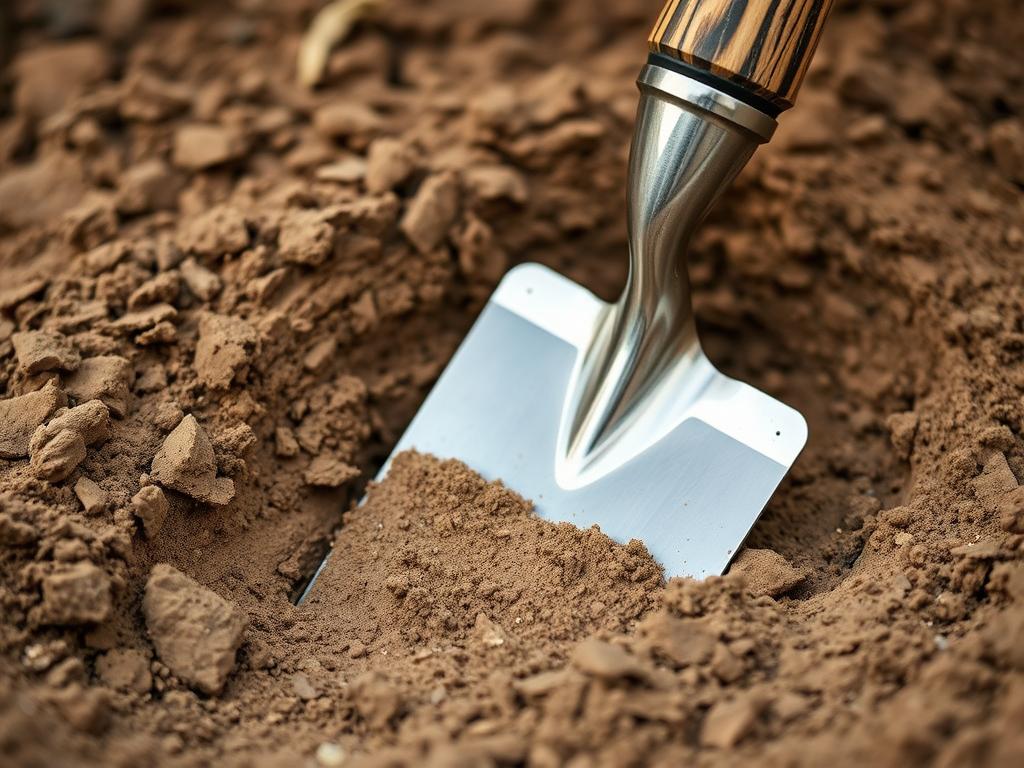
Wilcox All-Pro 202 Heavy Duty Garden Trowel
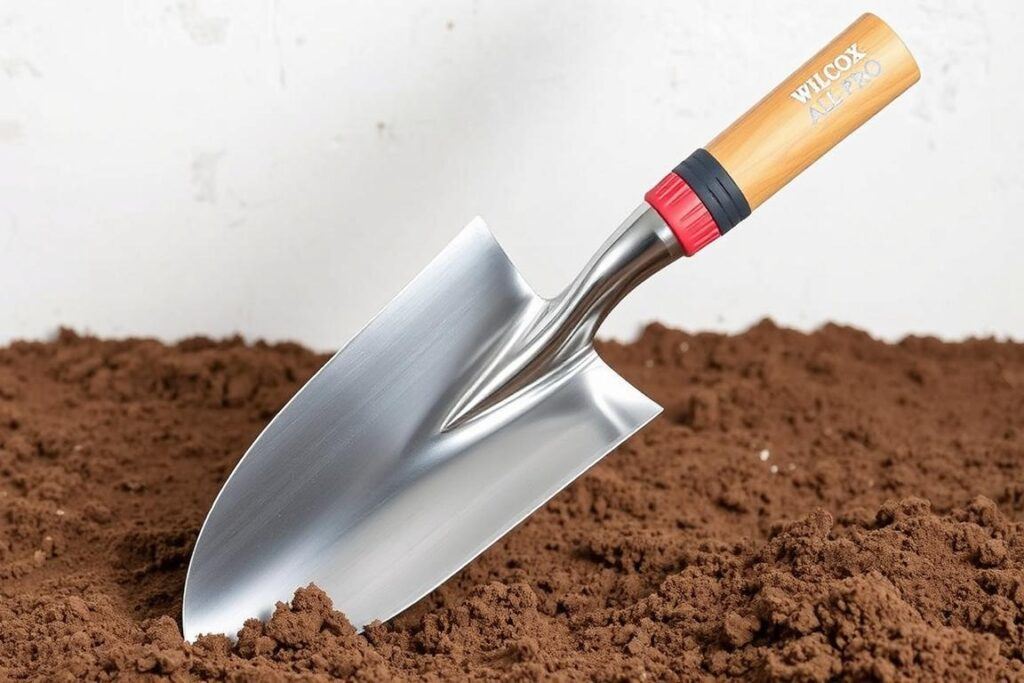
Blade Material: Single-piece stainless steel
Handle Design: Ergonomic rubber grip
Unique Features: Extra-thick blade, rust-resistant construction
| Pros | Cons |
| Virtually unbreakable in clay soil Sharp edge cuts through compacted clay Comfortable grip reduces hand fatigue Lifetime warranty | Premium price point Heavier than some alternatives No measurement markings |
Perfect for gardeners who regularly work with heavy clay soil and need a tool that won’t bend or break under pressure.
DeWit Forged Hand Trowel
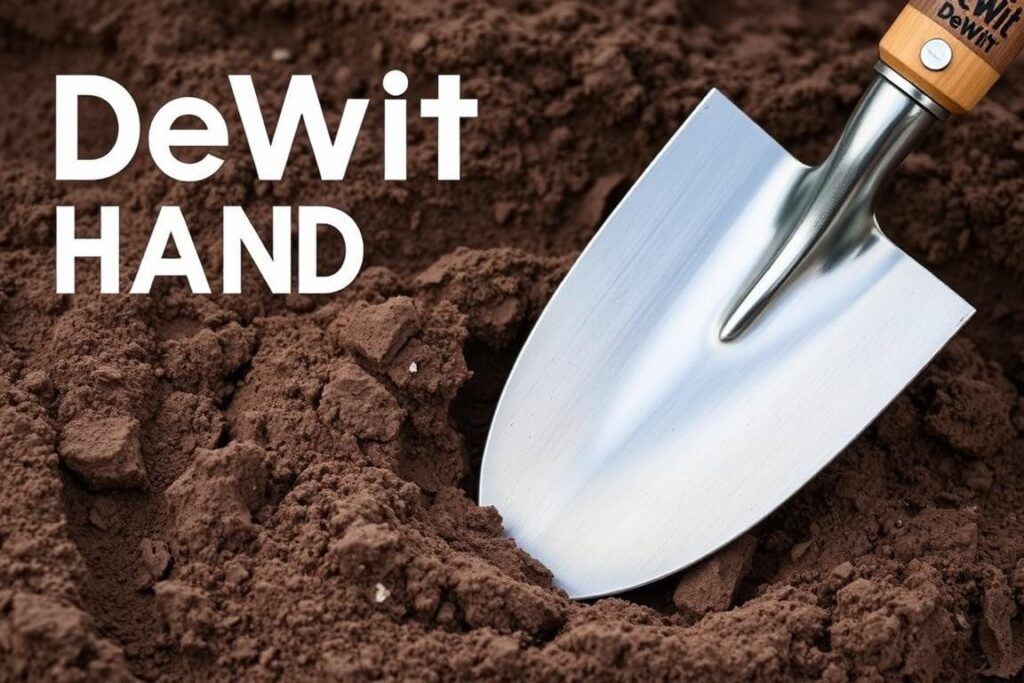
Blade Material: Forged carbon steel
Handle Design: Ash hardwood
Unique Features: Hand-forged for strength, boron steel blade.
| Pros | Cons |
| Exceptional durability in tough conditions Sharp edge easily cuts through clay Traditional craftsmanship Lifetime guarantee | Requires occasional oiling of wooden handle No cushioned grip Higher price point |
Ideal for gardeners who appreciate traditional craftsmanship and need a trowel that can handle the toughest clay soil conditions.
Fiskars Big Grip Garden Trowel
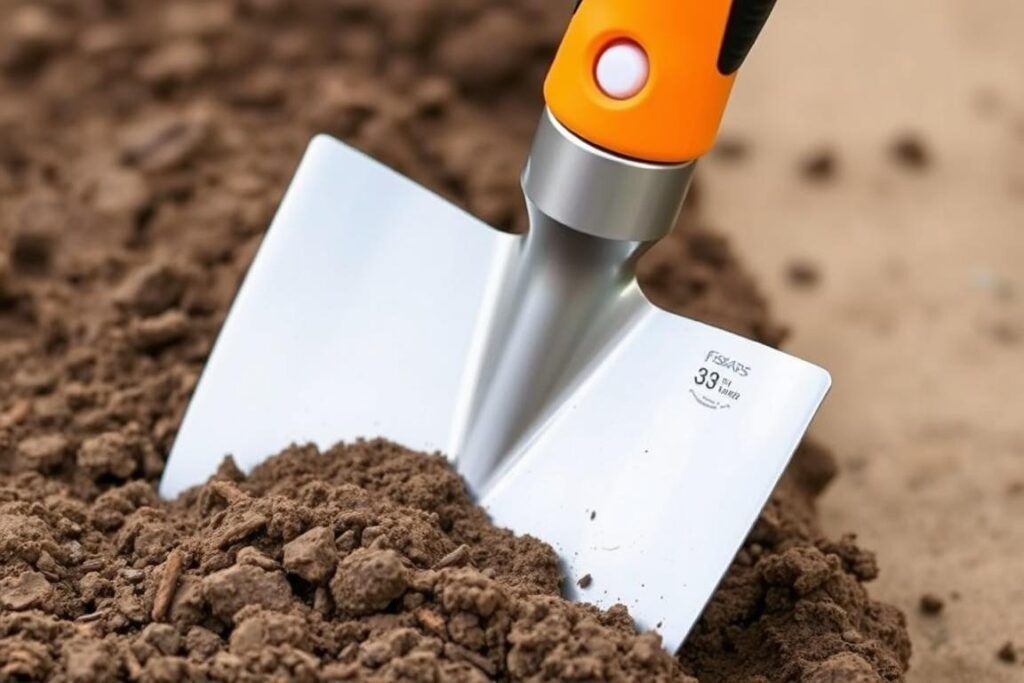
Blade Material: Cast aluminum
Handle Design: Large ergonomic soft grip
Unique Features: Extra-large handle, rust-proof construction
| Pros | Cons |
| Excellent grip for wet conditions Lightweight yet strong Budget-friendly option Rust-resistant | Not as durable as steel options Blade edge isn’t as sharp May bend under extreme pressure |
Great budget option for occasional clay soil gardening with excellent ergonomics for those with arthritis or hand strength issues.
Best Garden Trowels for Sandy Soil
Sandy soil’s loose, granular nature requires trowels with deeper scoops and specific designs to prevent soil from falling away during transfer. These recommendations excel in sandy conditions.
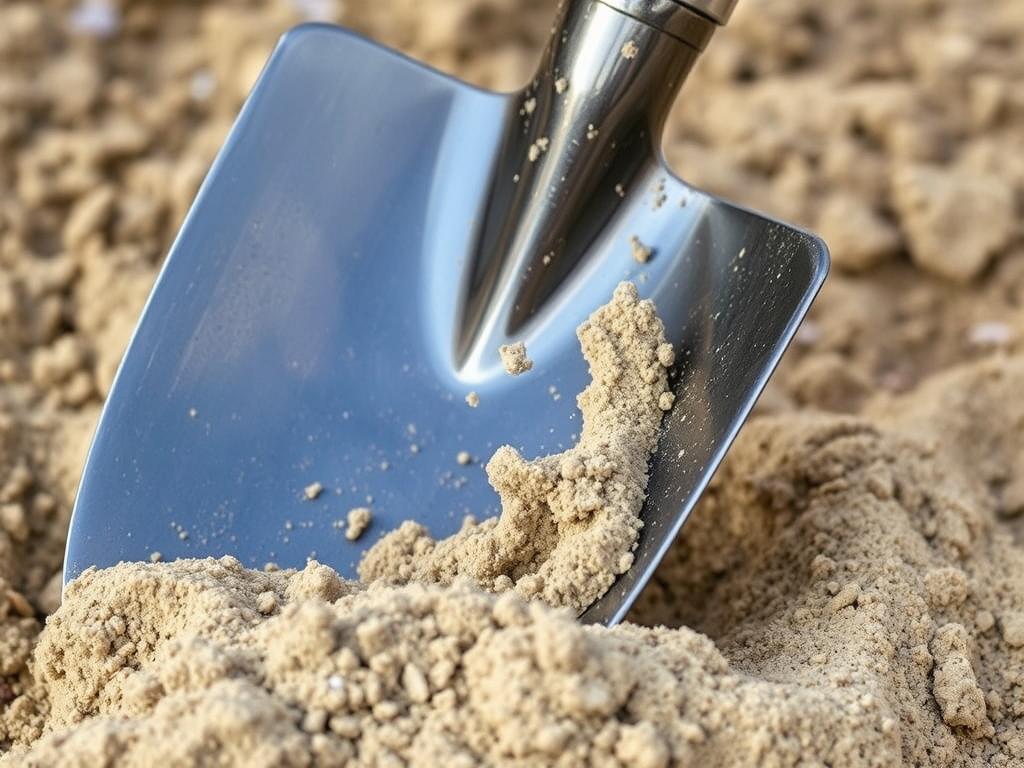
Corona CT 3710D ComfortGEL Garden Trowel
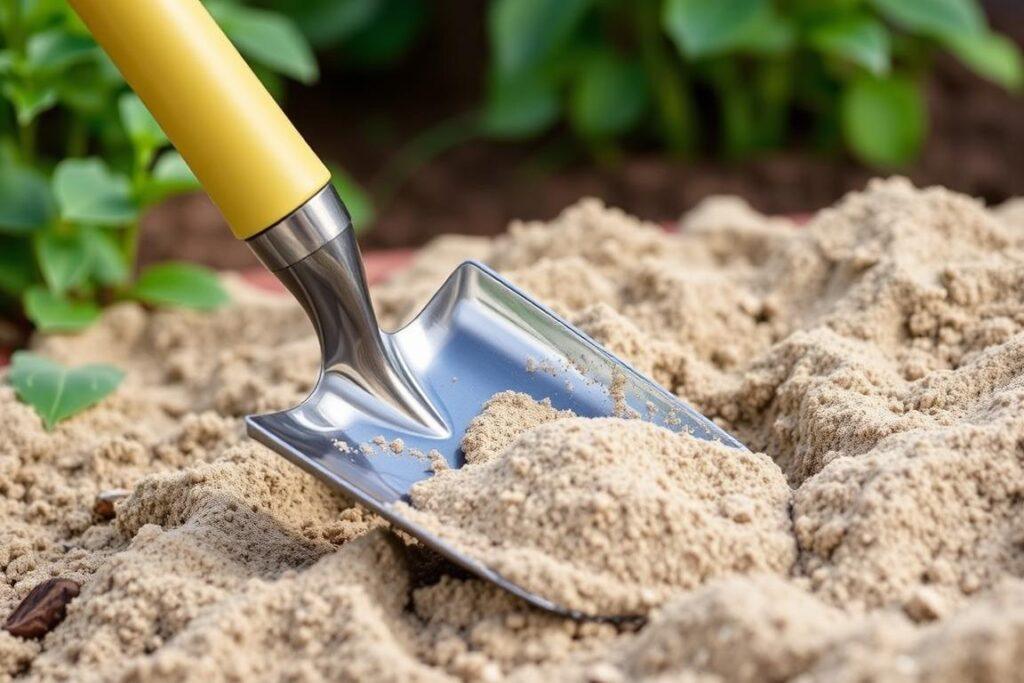
Blade Material: Stainless steel
Handle Design: ComfortGEL ergonomic grip
Unique Features: Deep scoop design, depth markings, hanging hole.
| Pros | Cons |
| Deep scoop holds sandy soil effectively Comfortable gel grip reduces fatigue Depth markings for precise planting Rust-resistant stainless steel | Gel grip may deteriorate over time Not ideal for heavy clay soil Mid-range price point |
Excellent choice for gardeners with sandy soil who need a comfortable grip and precise planting depth control.
Edward Tools Bend-Proof Garden Trowel
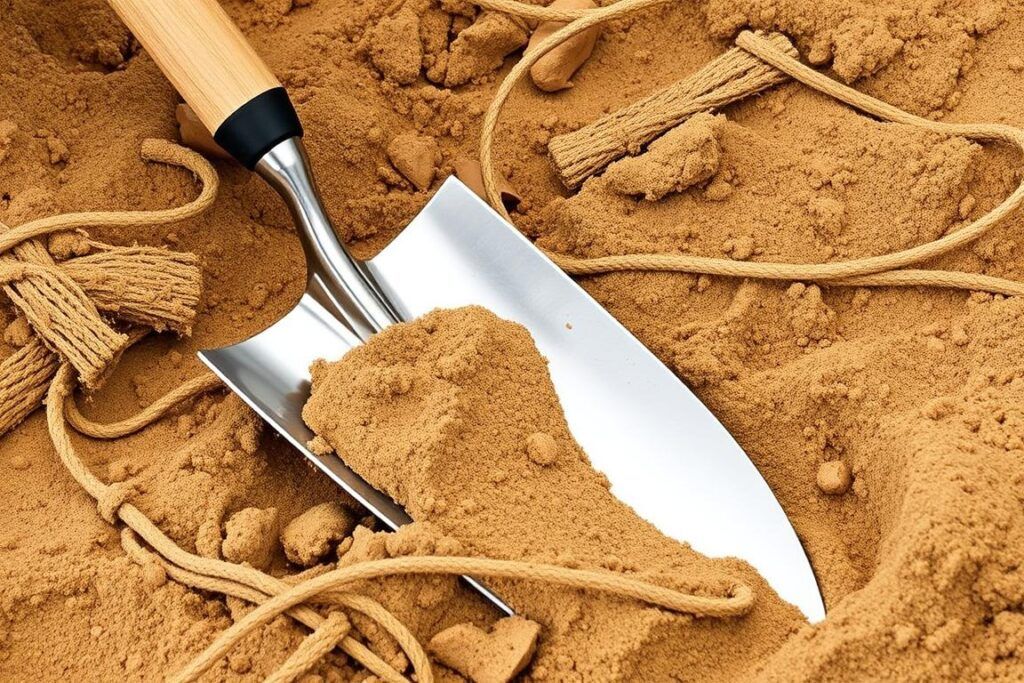
Blade Material: Stainless steel
Handle Design: Rubber ergonomic grip
Unique Features: Extra-wide scoop, one-piece construction.
| Pros | Cons |
| Wide scoop holds more sandy soil One-piece construction prevents breaking Comfortable rubber grip Affordable price point | No measurement markings Heavier than some alternatives Handle may be too large for small hands |
Great budget option for sandy soil gardening with excellent durability and soil-holding capacity.
Radius Garden 100 Ergonomic Aluminum Hand Trowel
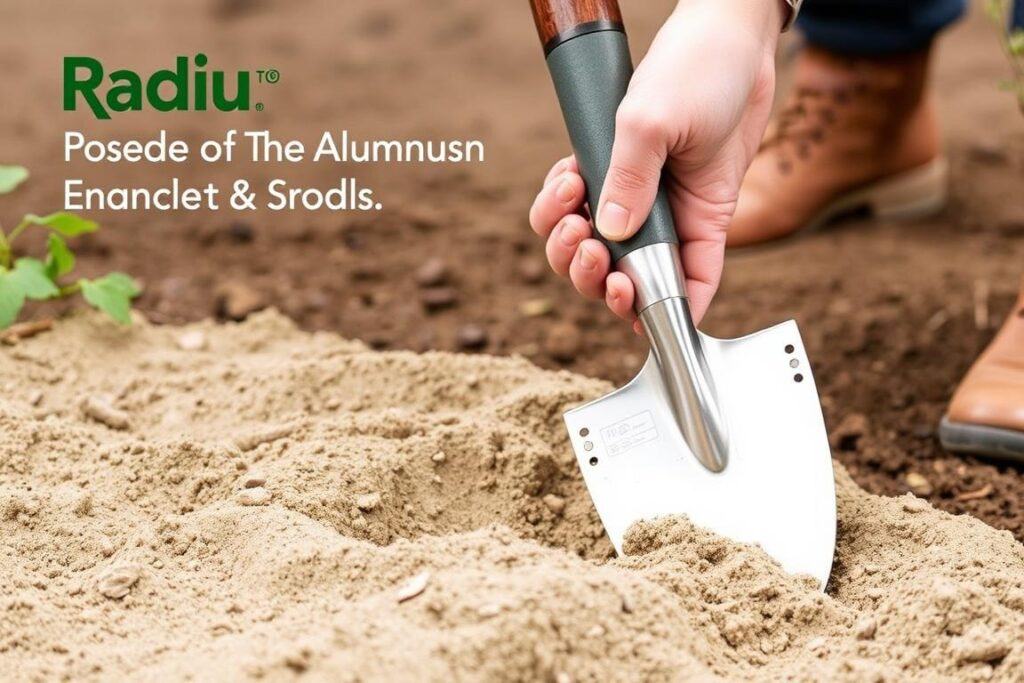
Blade Material: Aluminum
Handle Design: Patented Natural Radius Grip
Unique Features: Ergonomic thumb and palm support, lightweight design.
| Pros | Cons |
| Unique handle reduces wrist strain Lightweight for extended use Good scoop design for sandy soil Rust-proof aluminum construction | Higher price point Not as durable as steel options Unconventional grip takes adjustment |
Ideal for gardeners with wrist issues who work primarily with sandy soil and need an ergonomic solution.
Best Garden Trowels for Loamy Soil
Loamy soil is a gardener’s dream—well-balanced with good structure and fertility. While most trowels work well in loamy soil, these options offer special features that enhance the planting experience in this ideal medium.

Wilkinson Sword Stainless Steel Hand Trowel
Blade Material: Polished stainless steel
Handle Design: FSC certified ash wood
Unique Features: Leather hanging strap, mirror-polished finish.
| Pros | Cons |
| Perfect balance for loamy soil work Beautiful traditional design Polished finish prevents soil adhesion 10-year guarantee | Requires wood maintenance No measurement markings Mid-range price point |
Garden Weasel Garden Trowel
Blade Material: Carbon steel with powder coating
Handle Design: Ergonomic non-slip grip
Unique Features: Depth markings, serrated edge, measurement conversions.
| Pros | Cons |
| Precise depth markings for seed/bulb planting Serrated edge cuts through roots Comfortable grip for extended use Good value for features | Coating may wear over time Not as durable as one-piece designs Handle connection could be stronger |
Nisaku NJP650 Hori-Hori Weeding & Digging Knife
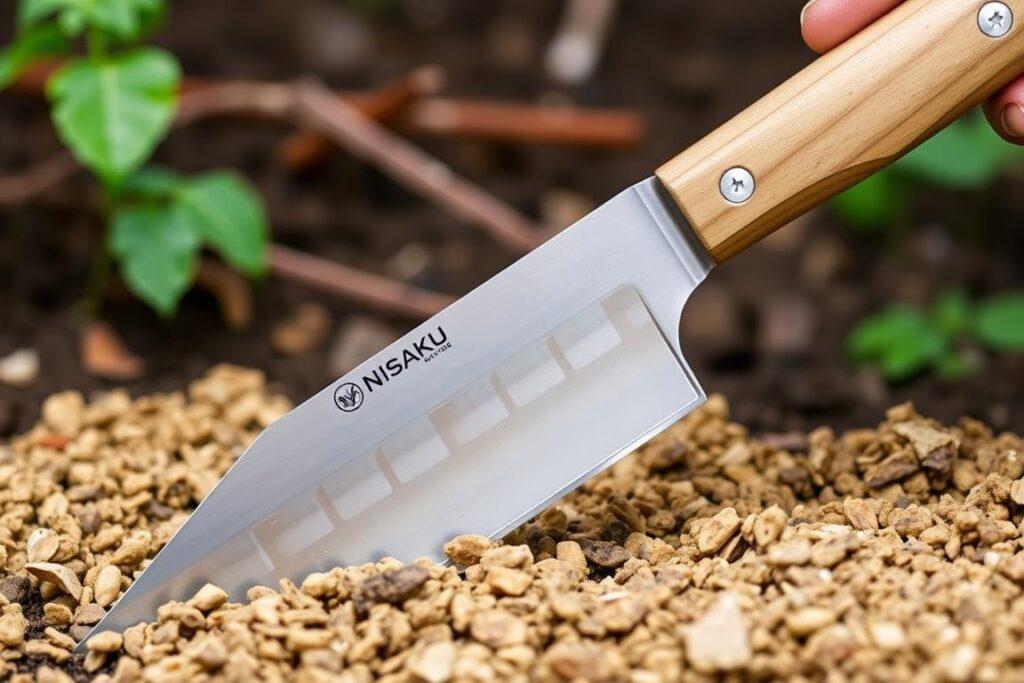
Blade Material: Stainless steel
Handle Design: Hardwood with brass rivets
Unique Features: Dual serrated and straight edges, depth markings, concave blade.
| Pros | Cons |
| Multi-functional tool for digging and cutting Depth markings for precise planting Excellent for transplanting in loamy soil Durable construction | Higher price point Requires sheath for safe storage Heavier than standard trowels |
Versatile option for gardeners who want a multi-purpose tool that excels in loamy soil and can handle various gardening tasks.
Best Garden Trowels for Rocky Soil
Rocky soil presents unique challenges with stones and pebbles that can damage lesser tools. These heavy-duty options are specifically designed to navigate rocky terrain without bending or breaking.
Spear & Jackson 3060EL Elements Digging Trowel

Blade Material: Hardened carbon steel
Handle Design: Weather-resistant comfort grip
Unique Features: Extra-thick blade, hammer end, rust-resistant coating.
| Pros | Cons |
| Extremely durable in rocky conditions Hammer end for breaking soil clumps Comfortable grip even when wet Good value for durability | Heavier than standard trowels Coating may chip with heavy use No measurement markings |
Excellent choice for gardeners with rocky soil who need a tool that can withstand impacts with stones without damage.
Fiskars FiberComp Trowel

Blade Material: FiberComp composite
Handle Design: Integrated with blade, ergonomic
Unique Features: Virtually unbreakable construction, lightweight design.
| Pros | Cons |
| Extremely durable composite construction Lightweight for reduced fatigue Will not rust or corrode Affordable price point | Not as sharp as metal blades Less traditional appearance May flex slightly under extreme pressure |
Great option for gardeners with rocky soil who want a lightweight, maintenance-free tool that won’t break when hitting stones.
Kent & Stowe Capability Trowel

Blade Material: Stainless steel
Handle Design: FSC certified ash wood
Unique Features: Serrated edge, depth markings, hammer end.
| Pros | Cons |
| Serrated edge cuts through roots and soil Hammer end for breaking soil clumps Depth markings for precise planting Versatile multi-function design | Higher price point Requires wood maintenance Heavier than standard trowels |
Versatile option for gardeners with rocky soil who need a multi-functional tool that can handle various challenging conditions.
Garden Trowel Buying Guide
When selecting the perfect garden trowel for your soil type, consider these important factors to ensure you get a tool that will perform well and last for years.
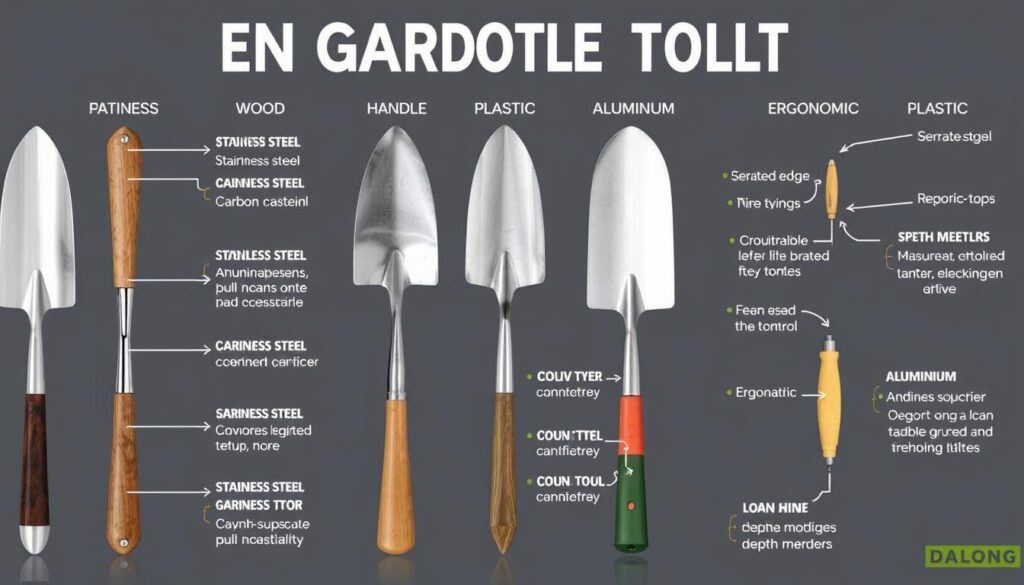
Blade Width and Thickness
| For Clay Soil: | For Loamy Soil: |
|---|---|
| Narrower blade (2-3 inches) for better penetration Thicker blade (2mm+) to prevent bending Pointed tip for breaking through compacted areas | Medium width blade (2.5-3.5 inches) for versatility Standard thickness (1.5-2mm) works well Depth markings beneficial for precise planting |
| For Sandy Soil: | For Rocky Soil: |
|---|---|
| Wider blade (3-4 inches) to hold loose soil Deeper scoop to prevent spillage Standard thickness (1.5-2mm) is sufficient | Narrower blade (2-3 inches) to navigate between rocks Extra-thick blade (2.5mm+) to resist damage Serrated edge helpful for cutting through roots |
Handle Grip for Different Conditions
| For Wet Conditions: | For Extended Use: |
|---|---|
| Rubber or soft-grip handles provide better grip when wet Textured surfaces prevent slipping Avoid smooth wooden handles that become slippery | Ergonomic handles reduce wrist strain Padded or gel grips increase comfort D-shaped or T-shaped handles provide leverage |
| For Dry Conditions: | For Arthritic Hands: |
|---|---|
| Any handle material works well Wooden handles are comfortable in hot weather Consider handle length for reaching into beds | Larger diameter handles are easier to grip Soft materials reduce pressure points Lightweight materials reduce fatigue |
Maintenance Tips for Longevity
| For Metal Blades: | For Composite/Plastic Handles: |
|---|---|
| Clean soil off after each use Apply light oil to prevent rust (especially carbon steel) Store in dry location Sharpen edges occasionally with file | Rinse clean after use Avoid prolonged sun exposure Check for cracks regularly No special treatments needed |
| For Wooden Handles: | General Storage Tips: |
|---|---|
| Apply linseed oil annually Avoid prolonged exposure to moisture Sand rough spots to prevent splinters Store indoors during winter | Hang tools when possible Keep away from extreme temperatures Store with similar tools to prevent damage Consider a tool roll for organization |
Best Garden Trowels Comparison
Use this quick reference guide to compare our top picks across different categories and find the perfect trowel for your garden’s soil type.
| Category | Best Overall | Best Budget | Best Premium |
|---|---|---|---|
| Clay Soil | Wilcox All-Pro 202 $45-55 | Fiskars Big Grip $10-15 | DeWit Forged Hand Trowel $40-50 |
| Sandy Soil | Corona CT 3710D $15-20 | Edward Tools Bend-Proof $10-15 | Radius Garden 100 $20-25 |
| Loamy Soil | Garden Weasel $15-20 | Wilkinson Sword $12-18 | Nisaku NJP650 Hori-Hori $30-40 |
| Rocky Soil | Spear & Jackson 3060EL $15-25 | Fiskars FiberComp $10-15 | Kent & Stowe Capability $25-35 |
Find Your Perfect Garden Trowel Today
The right trowel makes all the difference in your gardening experience. Choose a tool specifically designed for your soil type to save time, reduce strain, and achieve better results in your garden.
Conclusion
Selecting the best garden trowel for your specific soil type can significantly improve your gardening experience. Clay soil requires strong, sharp trowels that can penetrate compacted ground. Sandy soil benefits from deeper scoops that hold loose particles. Loamy soil works well with versatile trowels that offer precision features. Rocky soil demands durable tools that can navigate around stones without damage.
Consider your garden’s unique conditions, your physical needs, and your budget when making your selection. A quality trowel is an investment that will serve you for many gardening seasons to come. With proper care and maintenance, the right trowel will become a trusted companion in creating and maintaining your garden’s beauty.
Remember that the best garden trowel is ultimately the one that feels comfortable in your hand and performs well in your specific soil conditions. Don’t hesitate to invest in a quality tool that will make your gardening tasks more efficient and enjoyable.

